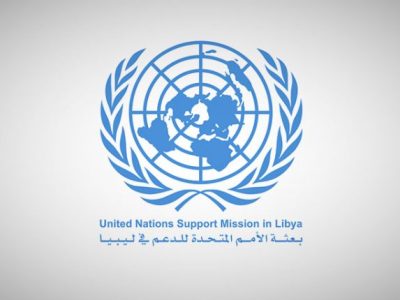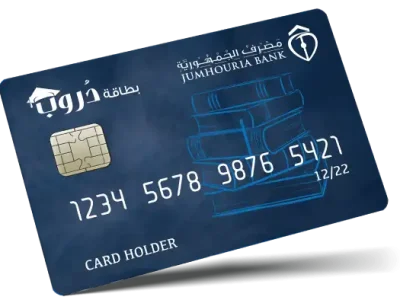Digital Finance in Libya: Rebuilding Trust and Unlocking Private-Sector Development
Public trust in Libya’s banks was badly shaken by years of instability. At one point, roughly one-third of the nation’s cash stock was circulating outside the banking system – a stark indicator of how many Libyans preferred cash hoarding to bank deposits. This distrust dates back to events like the freezing of all Libyan bank accounts during the 2011 revolution, a trauma that left households wary of formal institutions. To address the cash culture and rebuild confidence, the Central Bank of Libya (CBL) has embarked on an ambitious digital modernization drive. In early 2023, the CBL announced plans for a new instant payments network (dubbed LYPAY) and an open banking framework, with technical support from the European Union. These upgrades aim to make transactions faster, easier, and more transparent, thereby encouraging Libyans to keep money within the banking system. Crucially, the instant payment platform will operate 24/7 with real-time settlement, signaling a break from past inefficiencies. By mid-2023, Libya’s central bank had also reunified its previously split eastern and western branches – a milestone expected to improve overall banking services and oversight nationwide. Together, these steps send a strong signal that Libyan authorities are committed to integrating modern financial infrastructure, which is a key precondition to regaining public trust.
Digital finance uptake is already visible on the ground. Even amid conflict, some Libyans turned to electronic payments out of necessity, and usage has climbed. For example, in the country’s east – which was cut off from the national payment system during the civil war – mobile e-wallets became a prevalent substitute for cash. By 2019, one popular Libyan mobile app (Watba) processed about LYD 10 billion (≈$2 billion) in transactions, five times the value flowing through the formal national card payments network. In western Libya, by contrast, more people use debit cards and point-of-sale terminals, thanks to better connectivity to the national switch. This regional contrast underscores both the challenges and the promise of digital finance in Libya: where traditional banking faltered, tech-driven solutions stepped in. Now, with the central bank championing countrywide digital platforms and hosting its first national Electronic Payment Forum in 2025, there is growing official support for expanding e-wallets, mobile banking and point-of-sale systems across Libya. The CBL’s governor has explicitly tied these efforts to broader financial inclusion and economic modernization goals. Each successful mobile payment or instant transfer not only offers convenience but also helps restore a measure of faith in the financial system’s reliability.
Notably, Libya is drawing on international experience to guide its path. The EU-funded E-Nable program (2022–2025) is providing expertise and €5 million to build Libya’s digital finance capacity. One objective is to create a “conducive regulatory environment” for fintech – essentially updating laws and regulations so that innovative services like mobile wallets, electronic money, and crowdfunding can operate safely under the central bank’s oversight. This kind of enabling framework is critical: it reassures consumers that new fintech products are supervised (addressing concerns like fraud or data security), and it signals to entrepreneurs that regulators welcome innovation. Other countries in the region offer encouraging comparisons. For instance, even in Somalia – a state with severe institutional fragility – over 70% of adults now use mobile money regularly, leapfrogging traditional banks altogether. And in more stable North African economies like Tunisia, domestic credit and banking services reach a far larger share of the private sector, highlighting the scope for Libya to catch up. These examples reinforce a core lesson for Libya: with the right infrastructure and oversight, digital finance can flourish and help rebuild trust, even in challenging environments.
Building Credit and Confidence: From Mobile Payments to Credit Registries
Beyond payments, financial innovation is strengthening the infrastructure of trust that underpins lending and business growth. One key piece of this puzzle is credit information. Libya’s sole credit registry – the Libyan Credit Information Center, established in 2009 – has provided only limited, patchy data on borrowers. Banks have often been unable to reliably assess the risk of lending to private companies or new entrepreneurs, contributing to an extremely low level of credit to the private sector. (In 2015, a World Bank survey found just 2% of Libyan firms had a bank loan or credit line; by 2022, total bank credit to the private sector was only about 12% of GDP, among the lowest ratios in the world.) By comparison, Tunisia’s banks lent the equivalent of roughly 60% of GDP to private actors, underscoring how far Libya needs to progress in channeling funds to businesses. The Libyan economy’s credit gap is not merely a statistic – it translates into shops that cannot get working capital, farmers who cannot finance equipment, and start-ups that rely on personal networks instead of formal finance.
Modernizing financial infrastructure can change this equation. The central bank has recognized that better credit data and property registries are critical to unlock lending. In early 2023 it issued new instructions urging banks to regularly update and use the national credit registry information when evaluating loans. Automating and upgrading the credit bureau’s systems is expected to improve data quality and usability, making it easier for lenders to check a borrower’s history. Likewise, efforts are underway to rebuild collateral registries – for example, digitizing land and property records that were largely destroyed or lost during years of turmoil. If banks can verify collateral and credit histories more easily, they will be more comfortable extending credit to worthy borrowers, rather than keeping most of their funds parked in risk-free accounts at the central bank (as has been the case for years). International financial institutions have encouraged Libya to pursue these reforms as a foundation for private-sector revival. The International Finance Corporation (IFC), for instance, notes that strengthening credit reporting and establishing a functional collateral registry would “ease access to credit and revitalize [the] economy”. These behind-the-scenes upgrades may not grab headlines, but they directly address the information asymmetry and legal uncertainty that have paralyzed lending to Libya’s entrepreneurs.
Digital finance tools complement this improved infrastructure by generating new data and reaching underserved groups. As the IFC also observed, wider adoption of mobile wallets and digital payments can help build transaction histories for individuals and small businesses, which in turn enhances their creditworthiness over time. A shopkeeper using a mobile point-of-sale device or a mobile money app will have a record of revenues that a bank could eventually review – a far cry from the opaque cash-only transactions that dominate the informal economy. Moreover, digital channels can encourage a culture of saving and formal financial interaction. When 300,000 Libyans signed up for the CBL-backed Miza mobile wallet in recent years, they were not just downloading a payments app; they were joining a nascent ecosystem where their deposits, payments, and even small loans can be tracked and protected within regulated institutions. Over time, such engagement can rebuild confidence that banks and fintech providers are reliable custodians of people’s money. Early signs are promising: Libyan commercial banks have started to introduce more digital services – one major bank even launched biometric ID and e-KYC (electronic Know-Your-Customer) processes to accelerate customer onboarding. These innovations improve security and accessibility, which are essential for trust. And as of 2025, Libyan banks like the Libyan Islamic Bank are rolling out full-featured mobile banking platforms that integrate with the CBL’s instant payment system, enabling real-time transfers and account management via smartphone. Each such development signals that Libya’s financial sector is slowly entering the modern era, aligning with global standards and customer expectations.
Laying Foundations for Private-Sector Revival
The ultimate payoff from these financial innovations is the potential to unlock Libya’s private-sector growth. A more trusted and tech-enabled banking system is a prerequisite for entrepreneurs to thrive in any country – and in Libya, this could be transformative. Decades of state-dominated economic activity and conflict have left the private sector exceedingly small. Improving access to finance is therefore high on the reform agenda for Libyan policymakers and international partners. The World Bank and IMF have repeatedly highlighted that re-energizing Libya’s economy will require shifting from a cash-based, state-led model toward one where financial institutions become enablers of private investment and enterprise. Financial innovation can accelerate this shift in several ways.
First, digitizing payments and banking lowers transaction costs and expands market reach for businesses. For example, when more than 6,000 merchants in eastern Libya began accepting mobile app payments in lieu of cash, it not only kept commerce flowing during cash shortages but also created a new digital market infrastructure that businesses can build on. Similarly, if Libya achieves full interoperability between banks via the national payments switch – a goal explicitly emphasized by the central bank – a shop in Misrata could seamlessly receive an e-payment from a customer of any bank, or a Tripoli startup could pay suppliers in Benghazi instantly. Reducing such frictions makes it easier for new enterprises to operate and scale across the country. It also opens the door for e-commerce and other technology-driven sectors to emerge over time, as reliable electronic payment rails are a basic requirement for online business. Importantly, the shift toward digital transactions can also chip away at the informal economy and improve transparency. Over time, this fosters a healthier business environment where legitimate companies – not just those with cash on hand or informal networks – can compete for customers and financing.
Second, a trusted financial system encourages investment. When individuals feel confident depositing their savings in banks or e-wallets, those funds become available for lending to productive ventures. In Libya, restoring this confidence could unlock significant capital. Central Bank data indicate that cash hoarding has started to decline in recent years, suggesting tentative improvements in trust. As more Libyans bring their money back into formal channels, banks will have liquidity to lend rather than merely holding reserves. Combined with the enhanced credit information systems and legal reforms mentioned earlier, this creates the conditions for a gradual rise in credit to the private sector – from today’s very low base toward levels more in line with regional peers. Even a modest increase in bank lending to local businesses could stimulate job creation and diversification in an economy that desperately needs it. Sectors like agribusiness, construction, and services, which have been starved of financing, stand to benefit if they can finally access credit on reasonable terms.
Finally, the push for financial innovation sends a powerful message about the future of Libya’s economy. It signals a pivot from an oil-rent model toward an entrepreneurial one. By supporting fintech startups, promoting mobile banking, and updating financial laws, Libya is cultivating a new generation of private-sector actors who can develop homegrown solutions to local challenges. The presence of Libyan fintech firms at the recent Electronic Payment Forum – showcasing payment apps and digital solutions – exemplifies this budding ecosystem. It is a reminder that Libya’s youth and business community, given the tools and trust, are eager to drive economic renewal. As one observer noted, these efforts are laying “a foundation for a competitive private sector” in Libya’s future. In other words, financial innovation is not a side project separate from development; it is an integral strategy for national progress.
Libya’s embrace of digital finance and modern financial infrastructure offers a realistic path to break the cycle of distrust and stagnation. The road ahead is not without hurdles – regulatory capacity needs strengthening, and technology alone cannot solve deeper political issues. Yet, the evidence so far is encouraging. Mobile wallets, instant payments, and credit registries are more than technical tools; they are building blocks of confidence. Step by step, they are helping Libyans trust their institutions again, by making financial services more inclusive, efficient, and secure. And with greater trust comes greater private-sector activity: shops willing to expand, banks willing to lend, investors willing to take chances. For a country eager to move beyond its oil dependency and conflict legacy, these innovations in finance provide something profoundly valuable – a bridge from cash to confidence, and a catalyst for inclusive economic growth grounded in the resilience and ingenuity of Libyan people




